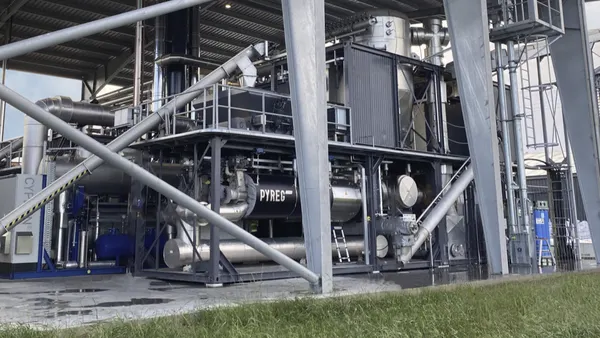Dive Brief:
- A new report by Radiant Insights projects that the global waste-to-energy (WTE) market will reach $37.64 billion by 2020, with the drivers likely being the ongoing focus on energy security and continued shrinkage of landfill capacity.
- The strong market for solar, wind, and hydro is expected to present tough competition, while the industry also faces high upfront costs to set up WTE plants. But there is some anticipated relief in the form of tax benefits and government subsidies expected to boost market growth over the next six years.
- Other key findings include:
- Thermal WTE technologies lead the market, comprising 88.2% of total market revenue in 2013.
- Biological technologies are expected to experience the most growth.
- Europe controls the largest regional market, accounting for 47.6% of total revenue in 2013.
- Asia Pacific is expected to take the lead in market growth over the forecast period.
Dive Insight:
Technology and the quest for the cleanest WTE options appear to be key to shaping WTE’s fate moving forward.
The boom in fairly sophisticated thermal technologies is one demonstration of this predictor. The technology's one drawback also speaks to the value of high tech and of prioritizing environmental considerations: the flue gases emitted have presented somewhat of an obstacle—however a technology called flue gas desulfurization is expected to push past that barrier.
The more environmentally friendly biological methods such as digestion are projected to grow at an estimated CAGR of 9.7% from 2014 to 2020, with the key selling points being they generate less greenhouse gas emissions and divert organic waste from landfill.
As far as the future for WTE in the U.S., the renewable portfolio standards, which help level the playing field among WTE and other renewable energies, are expected to be a predictor of which technologies will excel in which states.








